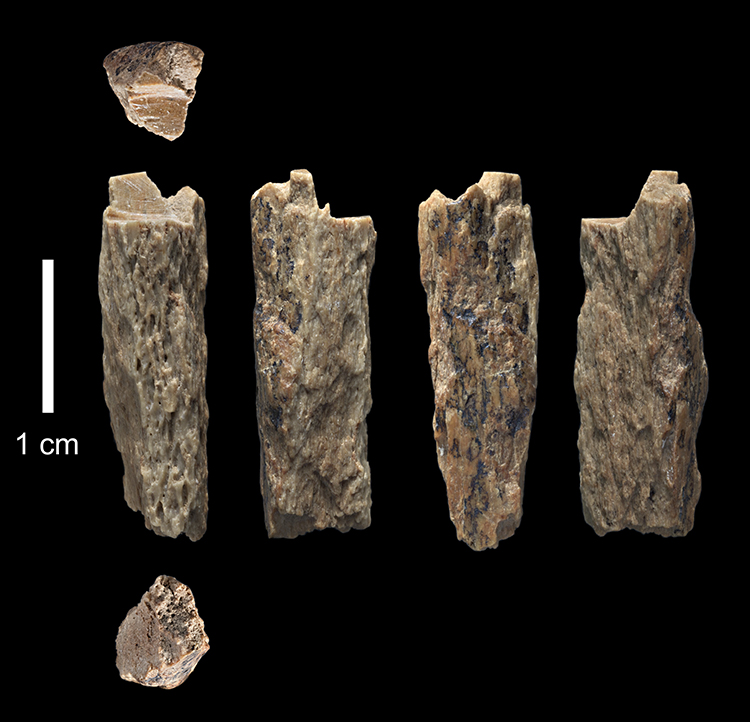A Mix of Prehistoric Humans
Friday, September 14th, 2018September 14, 2018
A fragment of bone discovered in a Siberian cave has recently revealed the first known hybrid between a Neandertal and a member of another prehistoric human group known as Denisovans. The fragment came from Denisova Cave on the Anuy River in the Altai Mountains of southern Siberia. Genetic material extracted from the bone fragment showed that a teenage girl who lived and died more than 50,000 years ago was the daughter of a Neandertal mother and Denisovan father. The finding confirms interbreeding between the prehistoric peoples that had been only hinted at in earlier genetic studies.

The bone fragment called Denisova 11 (seen here in different views) was found at Denisova Cave in 2012. DNA evidence recently showed that the bone came from the daughter of a Neandertal mother and a Denisovan father. Credit: © Thomas Higham, University of Oxford
Scientists at the Max Planck Institute for Evolutionary Anthropology in Leipzig, Germany, examined a small bone fragment excavated at Denisova Cave in 2012. Proteins extracted from the bone fragment, called Denisova 11, indicated that it came from a human being. The fragment likely came from a shinbone or thighbone. The thickness of the bone suggested the fragment belonged to a female who was at least 13 years old when she died. Radiocarbon dating indicated the bone fragment was at least 50,000 years old. Analysis of the bone’s genetic material showed that Denisova 11 had approximately equal amounts of Neandertal and Denisovan ancestry.
Denisovans were prehistoric humans who lived in Asia. Scientists do not know what they looked like, because they are known only from a few skeletal remains. Scientists identified this population by analyzing ancient DNA (deoxyribonucleic acid) recovered from the bones. The scientists were able to extract and sequence entire individual genomes. The term genome refers to all the genes on a cell’s threadlike structures called chromosomes. The discovery of Denisovans was the first time that scientists identified a prehistoric human population through DNA analysis alone.
The Neandertals were prehistoric people who lived in Europe and Asia. They are mainly known from thousands of fossils that date from about 150,000 to 39,000 years ago. Neandertals were very different from people today. Their skulls were huge, with a large, projecting face; a low, sloping forehead; and a prominent browridge, a raised strip of bone across the forehead above the eyes. By 2010, scientists had sequenced the entire Neandertal genome. The Neandertal genome differs markedly from that of the Denisovans, suggesting that the populations lived apart for many thousands of years.
The young girl was a hybrid of two very distinct groups of prehistoric people. Neandertals and Denisovans differed both culturally and physically. Meetings between the two groups and the creation of hybrid children were most likely rare events. The study of human genomes shows that both Neandertals and Denisovans also occasionally interacted and interbred with modern humans, whose era was beginning as the prehistoric humans were dying out. Among modern peoples of Europe, Asia, and the Pacific islands, between 1 and 4 percent of the population’s genome comes from Neandertals. Scientists have also found that Europeans, Asians, and some aboriginal peoples of Australia, New Guinea, and islands of the western Pacific have trace amounts of Denisovan DNA.


